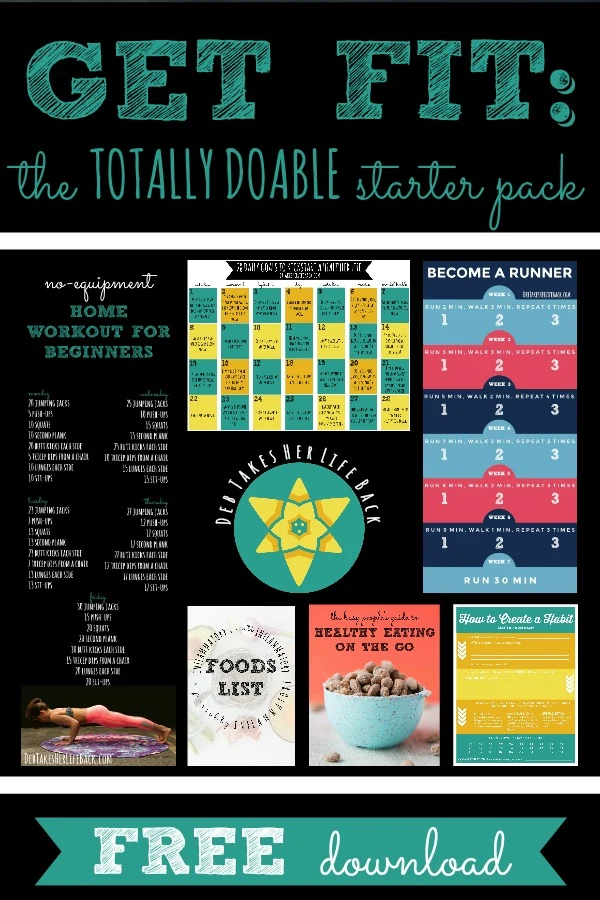If you’ve ever owned a FitBit, an Apple Watch, or heck, even an old school pedometer, you’ve likely heard the golden rule of step counting – walk 10,000 steps a day!
I’ll always remember the first day I slapped on an Apple Watch. I was a young and active person who should have no issues reaching 10,000 steps on a daily basis, or so I thought.
But when I finally checked my progress around dinnertime that first day, I was only at 2,000 steps. What?!
It turned out that I didn’t actually know how to walk 10000 steps a day. I had assumed it would come naturally and as you probably know since you’re reading this article…it doesn’t come naturally for most people. But it can!
Before we jump into the logistics of how to walk 10000 steps a day, let’s discuss the whys of walking itself as well as the 10,000-step rule.
Health Benefits of Walking
Walking is a fantastic form of physical activity that’s accessible to almost everyone. Incorporating a consistent walking routine into your lifestyle can significantly benefit your health, both physically and mentally.
Firstly, walking gets your heart pumping, which is essential for maintaining a strong cardiovascular system. By engaging in this low-impact exercise, you can help lower your risk of heart disease and stroke, while also improving blood circulation and increasing your endurance.
Besides the heart-related benefits, walking contributes to better overall health by aiding in weight management. When you walk, you burn calories, which can help you maintain or lose weight when combined with a balanced diet.
Walking is also an effective way to build and maintain muscle strength, especially in the lower body, and reduce the risk of osteoporosis.
Moreover, walking helps improve your mental health.
As you walk, your body releases endorphins, which are chemicals that make you feel good. These chemicals have been known to elevate your mood and reduce feelings of stress, anxiety, and depression.
Plus, walking provides an opportunity to enjoy and connect with nature or explore new areas, which can further enhance your mental well-being.
So, now that you understand the importance of walking…why should you walk 10,000 steps a day? What’s so magical about that number?
Understanding the Concept of 10,000 Steps
The concept of 10,000 steps originated in Japan during the 1960s, when a pedometer called the “manpo-kei” was introduced.
Manpo-kei translates to “10,000 steps meter,” and it was designed to help people track their daily steps and encourage more physical activity. Over the years, this idea has turned into a global standard, representing the recommended daily step count for a healthier life.
You’re probably wondering, why 10,000 steps specifically? Right?
While there isn’t any rigid scientific evidence supporting this exact number, it has been found that people who walk 10,000 steps a day tend to have lower blood pressure, improved cardiovascular health, and better weight management. This number is also seen as a reasonable and achievable goal that encourages people to get more active.
It’s important to note that according to Harvard Medical School, 10,000 steps might not be a one-size-fits-all target. Depending on your individual fitness level, you may benefit from walking fewer or more steps.
Nonetheless, increasing your daily step count is definitely a positive action you can take for your overall health.
Counting Your Steps
Walking 10,000 steps a day is a great goal to improve your overall health. But in order to know if and when you’ve actually achieved this goal, you’ll need a reliable method to count your steps.
First, consider using a pedometer.
Pedometers are small devices that count the number of steps you take by detecting the motion of your hips. Just clip it to your waistband, and it will track your steps throughout the day.
Pedometers come in various forms, from simple clip-on pedometers to watch-style models.
If you want a more comprehensive view of your daily activity, consider using an activity tracker or fitness tracker.
These wearable devices not only count your steps but also track other health-related metrics like calories burned, distance traveled, and even your heart rate. Many fitness trackers, like FitBits, can sync with your smartphone, making it easy to view your daily progress and set goals.
Speaking of smartphones, there are numerous phone apps available that can help you count your steps. Most smartphones have built-in accelerometers or motion sensors, which these apps use to detect your steps.
Some popular options include Google Fit, Apple Health, and MyFitnessPal. Just download the app, configure your settings, and start walking. (Just remember to bring your phone along whenever you’re on the move.)
Finally, if you’d like a combination of pedometer and smart features, some smartwatches include step counting and fitness tracking capabilities.
These devices can be a convenient option, as they not only display your step count on your wrist but may also include notifications and other useful smart features. This way, you can stay on track with your fitness goals and stay connected to your digital life.
Whether you go with a simple pedometer, an app, or a smartwatch, try to find the tracking method that best suits your lifestyle, preferences, and budget.

How to Walk 10000 Steps By Setting Walking Goals
So…it is 10,000 steps or bust from day one? Not quite!
It’s essential to set realistic and achievable walking goals to help you reach the recommended 10,000 steps a day. But before you can set your first goal, you’ll need to figure out your current daily step count.
Monitor your steps for a few days without changing your routine, and then calculate your daily average. This will give you a starting point and help you create a personalized step goal plan.
The World Health Organization and the American Council on Exercise suggest that adults should engage in at least 150 minutes of moderate-intensity aerobic activity per week. Walking offers a great way to meet this guideline.
Break this goal down into smaller daily goals, such as walking 30 minutes a day for five days a week, and gradually work your way up to 10,000 steps.
Here are a few tips to help you reach your walking goals:
- Set incremental goals: Starting with your current daily step average, aim to increase your daily step count by 10% each week. This incremental approach can help you steadily build your stamina and reduce the risk of injury.
- Schedule walking time: Incorporate walking into your daily routine by setting aside specific times for brisk walks. This can be during your lunch break, after dinner, or even as a part of your morning routine before work. Having a designated walking time can make it easier to stick to your plan.
- Join a walking group: A walking group or partnering with a friend can provide motivation, accountability, and social support. This can make the experience more enjoyable and help you stay committed to your walking goals.
- Use technology to your advantage: Tracking apps and wearable devices can help monitor your progress and encourage you to stay on track. Many apps also offer goal-setting features and the ability to share your achievements with friends, adding an element of friendly competition.
Remember to listen to your body and adjust your step goal plan as needed to stay active and healthy. With consistency and determination, you’ll be on your way to achieving 10,000 steps a day and improving your overall well-being.
How to Walk 10000 Steps By Increasing Your Step Count
Now that you know your current daily step count and have set a goal, how can you increase your step count to reach that goal? Taking extra steps throughout the day can add up quickly!
- Rather than searching for the closest parking spot, try parking farther away from your destination.
- If you’re at the office or school, use the bathroom that’s farthest from your desk or classroom. This not only adds some extra steps to your day but also provides you with a mini-break and a chance to stretch your legs.
- Consider walking to the grocery store or pharmacy instead of driving. If you live too far away, try parking farther from the store entrance or walking through aisles a few extra times.
- Make the most of your downtime in the day by walking as you wait for appointments or phone calls.
- Opt for the stairs whenever possible. Climbing stairs not only helps you add steps to your day but also provides an added workout for your legs and cardiovascular system.
- If you’re not used to taking the stairs or live in a high-rise building, start small by climbing a few flights of stairs before transitioning to the elevator, and gradually increase as your fitness level improves.
- Find a walking buddy to hold you accountable and make the journey more enjoyable. Having someone to chat with can make the time go by faster. Plus, you’re more likely to stick to your goals if you have a friend or family member who shares the same objective.
- Join a walking group to meet new people with similar interests.
- Consider getting a puppy that requires regular walks. Not only will a furry friend motivate you to get moving, but you’ll also enjoy the added emotional benefits of spending time with your pet.
Incorporating these suggestions into your daily routine can help you increase your step count to reach that 10,000-step goal.
Remember to start small and make adjustments that align with your fitness level and lifestyle. Before long, you’ll be well on your way to enjoying the many benefits of walking more each day.
How to Walk 10000 Steps By Fitting Walking into Your Schedule
I know what you’re thinking, I really do! I keep a really busy schedule; how am I supposed to fit walking into an already jam-packed day?
Incorporating 10,000 steps into your day might feel overwhelming at first, but with some creative planning, you can fit walking into even the busiest schedule. Here are a few suggestions to help you achieve that goal:
Make morning walks a habit: Start your day with a brisk walk around the neighborhood. An early morning walk not only contributes to your step goal but also helps energize you for the rest of the day. Set your alarm a little earlier and within a few weeks, you’ll notice waking up earlier becomes second nature.
Break your steps into smaller chunks: You don’t have to walk all 10,000 steps at once! Split your goal into smaller, more manageable walks throughout the day. For instance, walk for 15 minutes during your lunch break, take a quick stroll after dinner, or wander around your office for a few minutes every hour.
Incorporate walking into your daily routine: Look for ways to sneak more steps into your regular activities. Park farther away from the building entrance, take the stairs instead of the elevator, or walk to a nearby store instead of driving.
Make it social: Invite friends, family, or coworkers to join you on your walks. This not only adds a fun and friendly element to your walks but also provides accountability and motivation to keep going.
Remember, the key to making walking a consistent part of your routine is to make it enjoyable, varied, and adaptable to your schedule. Try out these suggestions, and soon you’ll find that reaching 10,000 steps per day is easier than you thought.

Ideal Pace of Walking
Finding the right pace for your 10,000 steps is crucial if you want to really maximize the health benefits of walking.
A good rule of thumb is to aim for a pace that feels comfortable yet brisk. Your walking pace should be fast enough to elevate your heart rate but not so fast that you’re out of breath.
A brisk walking pace typically ranges from 3 to 3.5 mph (4.8 to 5.6 km/h). At this pace, you should be able to cover 2 miles (around 3.2 km) in 30-40 minutes. Keep in mind, maintaining a consistent pace becomes more challenging as you walk longer distances.
To get started with finding your ideal pace, consider the following tips:
- Listen to your body: Pay attention to how you feel during the walk. Adjust your pace according to your comfort level and breathing.
- Use a pedometer or step tracker: These tools can help you monitor your pace and overall distance. This can be motivating and provide you with valuable feedback on your progress.
- Gradually increase your speed: It’s essential not to push yourself too hard at first. Start with a comfortable pace, then gradually pick up the speed as your fitness level improves.
By keeping track of your paces, you can ensure you’re maintaining a brisk walking pace that helps you reach your daily goal of 10,000 steps. As you become more comfortable with this pace, you’ll find it becomes second nature to walk at a brisk speed, providing you with the health benefits of regular physical activity.
Common Mistakes and How to Avoid Them
Walking 10,000 steps is a great way to combat sedentary behavior and improve your health. However, it’s easy to make mistakes when starting out.
One common mistake is sitting for too long during the day. Prolonged sitting can lead to health problems such as high blood pressure and an increased risk of chronic disease.
To avoid this, aim to break up your sitting time by spreading your 10,000 steps throughout the day. Set a reminder to stand up and walk for a few minutes every hour, or try incorporating short walking breaks into your daily routine.
Another mistake is not paying attention to your walking form. Poor technique can cause discomfort and lead to injuries over time.
To improve your form, keep your head up and looking forward, engage your core muscles, and maintain a slight bend in your elbows. Remember, practice makes perfect; focus on maintaining good posture as you walk, and your technique will improve over time.
Many people also try to achieve the 10,000-step goal too quickly, causing them to become discouraged or fatigued. To avoid this, start with a manageable target and gradually increase your daily steps.
For instance, begin with 3,000 steps and add 1,000 additional steps each week until you reach the 10,000 steps goal. This approach allows your body to adjust to the increased activity level while promoting consistency.
Lastly, don’t forget the importance of proper footwear. Wearing unsupportive or ill-fitting shoes can lead to pain and injuries.
Invest in a comfortable, well-cushioned pair of walking shoes that provide the support you need. Additionally, replace your shoes when they become worn or uncomfortable.
(Keep scrolling for tips to find the right footwear to support your goals!)
Other Exercise Modalities for Achieving 10,000 Steps
If you’re looking for alternative ways to achieve the equivalent of 10,000 steps, there are many other exercise modalities that can help you reach your fitness goals. These exercises focus on cardio, engage different muscles, and can be tailored to your fitness level.
Treadmill workouts are great for simulating walking or running without needing to leave your home or gym.
You can adjust the speed and incline to match your current fitness level, making it perfect for incorporating regular activity into your routine. Plus, most modern treadmills have built-in tracking systems to monitor your progress and distance covered.
Incorporating cardio exercises such as swimming, biking, or rowing can help you achieve similar health benefits as 10,000 steps.
These activities are fantastic for increasing your heart rate and improving cardiovascular fitness, and can be modified to suit your abilities. Remember, the objective is to engage in moderate-intensity exercise that keeps you moving for an extended period.
Various group fitness classes offer a fun and effective way to reach the equivalent of 10,000 steps.
Classes such as dance, aerobics, or circuit training provide a mix of cardio and strength exercises, keeping you active while improving your overall fitness level. Not to mention, the social aspects of these classes can be highly motivating and make your workout more enjoyable.
Lastly, don’t underestimate the power of daily activities that contribute to your physical well-being. Simple actions like taking the stairs instead of the elevator, parking farther away from your destination, or doing household chores can add up and help you achieve a more active lifestyle.

How to Walk 10000 Steps By Choosing the Proper Footwear
When embarking on a journey to walk 10,000 steps daily, it’s crucial to wear the right walking shoes to support your feet, joints, and back. Proper footwear can make all the difference in your walking experience.
When choosing walking shoes, look for comfort, support, and cushioning.
A great pair of walking shoes should have a flexible sole and a well-padded insole to absorb shock as you walk. Shoes with a wide toe box will prevent your toes from being cramped and allow for a more natural stride.
In addition to enhancing your comfort, the proper footwear can improve your walking form and help prevent injury.
Wearing ill-fitted or unsuitable shoes can lead to issues such as heel pain, shin splints, and even long-term joint problems. So it’s essential to take your time when selecting footwear and consider factors like arch support and ankle stability.
I personally discovered Hoka One shoes a few years ago that were a complete game-changer for my walking form. I found they helped to straighten my gait, reverse some plantar fasciitis I had developed, and avoid additional injuries.
Maintaining Your Achievement
So…once you’ve worked your way up and mastered how to walk 10000 steps, how can you ensure you stay there? To maintain your achievement, consider these tips:
- Set a daily goal: Use a step tracker to monitor your progress, and try to consistently reach your target of 10,000 steps. If you fall short one day, don’t be discouraged—simply make an effort to do better the next day.
- Break it up: Split your walks into smaller sessions throughout the day. For example, taking a morning walk, a lunchtime stroll, and an evening walk can help you gradually accumulate your steps without feeling overwhelmed.
- Make it fun: Listen to your favorite music or podcast, or walk with a friend to make your walk more enjoyable. The more you enjoy the activity, the more likely you are to stick to it.
- Choose different routes: To prevent boredom, switch up your walking routes, alternating between parks, neighborhoods, and nature trails. This variety will also help to challenge your muscle strength and endurance.
- Incorporate activities: Add other activities into your routine like swimming, cycling, or yoga to improve your overall fitness and muscle strength. This variety will complement your walking goals and offer additional health benefits.
Remember, consistency is key to maintaining your achievement of 10,000 steps per day. Understand that establishing this habit will take time, so you’ll need to stay patient and focus on your progress.
Keeping Motivated: Strategies and Tips
One key factor to achieving your 10,000-step goal is maintaining motivation. After all, the excitement of setting a new goal can only last for so long before it begins to feel old and you begin to lose interest.
Luckily, there are loads of hacks for staying motivated along the way!
Firstly, wear a fitness tracker or use a pedometer app on your smartphone.
Regularly tracking your steps can help you stay accountable and ensure you’re aware of your progress. Set a daily goal to give yourself a target to aim for each day.
Secondly, find a walking buddy.
Having a walking partner can make the experience more enjoyable and add a social component to your daily walks. Plus, you can encourage each other to reach your goals and share walking ideas.
Listening to music is another great way to make walking more fun and engaging.
Create a playlist of your favorite upbeat tunes to help keep your energy high and your mood positive while walking. Music can also help you maintain a steady pace and even distract you from fatigue.
Additionally, establish mini-goals within your daily 10,000-step target.
Aim for certain milestones like 2,000 steps by mid-morning or 6,000 by lunchtime. Breaking it down into smaller goals can help make the journey feel more manageable and give you a sense of accomplishment and encouragement throughout the day.
Finally, vary your walking routes to keep things fresh and interesting.
This can help prevent boredom and give you the chance to explore new areas or enjoy scenic views during your walks. The novelty will help the steps fly by, making it easier to hit your daily goal.

So, now that you know how to walk 10000 steps a day…it’s time to get out there and do it! We’re rooting for you!
You’ve got this.
Frequently Asked Questions
How many miles are covered in 10,000 steps?
10,000 steps is approximately equivalent to five miles. However, this can vary depending on factors like stride length and walking speed.
What is the recommended daily step count for different age groups?
While 10,000 steps per day is a popular target for adults, step goals can vary for different age groups. It is important to consult with a healthcare professional to determine a suitable target based on individual fitness levels and health conditions.
The worldwide average number of daily steps is around 5,000, but aiming for an increased amount of physical activity can lead to better overall health.
How many calories are burned by walking 10,000 steps?
The number of calories burned while walking 10,000 steps depends on factors like weight, age, and walking speed. However, walking this distance can typically burn anywhere between 400-500 calories.
What are some tips for walking 10,000 steps easily?
To help achieve your daily step goal, try incorporating the following strategies:
- Break up your goal into smaller increments throughout the day.
- Use a pedometer or smartphone app to track your progress.
- Park farther away from your destination to encourage more walking.
- Try taking the stairs instead of the elevator.
- Walk during your breaks at work or while talking on the phone.
Can walking 10,000 steps a day lead to weight loss?
Walking 10,000 steps a day can potentially lead to weight loss, as you are increasing your overall physical activity and burning calories.
Keep in mind that weight loss also depends on factors like nutrition, sleep, and stress management. Combining walking with a balanced diet and healthy lifestyle habits can help improve your overall well-being.
How to achieve 10,000 steps a day indoors?
If you’re unable to get outdoors, there are still ways to achieve your daily step goal indoors:
- Walk around your house or apartment while doing daily chores.
- Use a treadmill if you have one available.
- Try a walking workout video or online class.
- Walk in place during commercial breaks while watching television.
- Set a timer to remind yourself to walk around every hour during the day.

P.S. Ready to take charge of your health, but looking for a totally doable approach? Our free Get Fit Starter Pack includes six fantastic resources to help! Get yours HERE!
Disclosure: While all opinions are our own, we are a participant in the Amazon Services LLC Associates Program and other affiliate advertising programs, designed to provide a means for us to earn fees by linking to Amazon.com and affiliated sites, at no additional cost to you.



